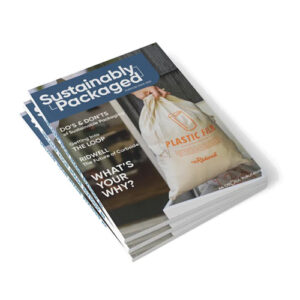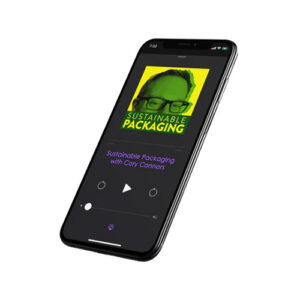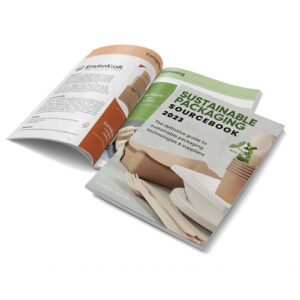
Frequently Asked Questions
What factors should I consider when selecting the appropriate thermal solution?
- A clearly defined temperature range around your products stability
- Seasonality requirements (Summer, Winter or Universal)
- 24, 48, 72 or 96 hour shipments
- Dimensional weight restrictions (if any)
- Method of transportation (overnight, 2-day or ground)
- Environmental requirements (Curbside recyclable, compostable, etc.)
Is TempSafeTM cellulose curbside recyclable?
- Yes, our cellulose insulation has received OCC-E certification and passed repulpability standards and requirements by Western Michigan University. Copies of these certifications are available upon request.
Is the cellulose insulation offered in specific sizes?
- Orora offers various 2-panel sets in 8″, 10″, 12″, 14″, 16″, and 18″ coolers with your option of a 0.5″, 1.0″, or 1.5″ thickness. Please contact your Orora sales representative for pricing and product availability.
What are your standard lead times for these available sizes?
- Orora keeps a limited amount of finished goods inventory on hand. Customers who forecast their needs can rely on dedicated inventory availability within 1-2 days. Otherwise, lead times are 2-4 weeks depending on seasonality.
Are these cellulose panels available in custom sizes?
- In addition to our published sizes, custom-sized requests are available, but require a minimum order purchase of one trailer load. Cost, quantity per truck load, and lead times to be determined.
Can I order custom branded cellulose panels?
- All requests for company specific branding require minimum order quantities and the random print of the artwork on one side only. The one-time plate costs are billed to the customer. Specific PMS colors must be communicated upon request.
How are these cellulose panels packaged and shipped to customers?
- The insulation panels are bulk-packed flat in gaylord boxes and double stacked on pallets unassembled. All A & B panels are bulk packed on separate pallets and labeled accordingly.
Where is the cellulose manufactured?
- Manufactured out of Norfolk, NE and New Albany, IN.
What is the shelf-life of the cellulose products?
- Since cellulose is made for one-time use, shelf life is not a concern. The insulation will not degrade due to heat nor condensation. The storage climate has proven to be fine in most non-climate controlled environments (warehouses) in the summer and winter months.
Does Orora offer refrigerants and conditioning services?
- We have pricing and availability through multiple refrigerant suppliers in North America and EMEA based on your logistical needs. Conditioning services are also available upon request.
Once conditioning refrigerants are solid, are they ready to use?
- No, refrigerants are like your mobile phone battery. You can charge them to 75% battery life, but your phone will expire sooner. Depending on your thermal pack-out, most refrigerants for 2-8ºC shippers should be conditioned at -20ºC for a specific period to maximize the energy they provide. Here is a quick reference guide for individual, case, and palletized refrigerants:
- Out of case / tray Singles: Require 24-48 hrs.
- Individual case (not pallet stacked): Requires 48-72 hrs.
- Cases/Pallet: If the cases are not chimney stacked to allow for proper airflow around all cases, 4 weeks is recommended. With proper stacking and proper airflow, conditioning can be ready in 3 weeks.
What does Phase Change mean?
- Phase change occurs when water changes from a frozen state to liquid water at 0ºC or from liquid to frozen state, also at 0ºC.
How will dry ice perform in a Cellulose cooler?
- Dry ice goes through a process called “sublimation” in which a solid substance skips the liquid state and changes directly into a gaseous state. The use of Kraft paper has been known to reduce the sublimation rate on its own vs. plastic bags. These Kraft laminated cellulose panels will yield optimal results when using dry ice.
Can you explain the difference between R-value and K-value?
- R-value is the rate of thermal resistance to prevent heat loss in a specific material or insulation. A higher R-value associates with a greater probability to prevent heat loss. K-value is a rate of thermal conductivity that is determined by dividing the insulation thickness by its known R-value. When the R-value is high, the corresponding K-value will be low.
Related Articles

Cold Chain Packaging Recycling Instructions
TempSafe™ thermal packaging products are easy to recycle. The guidelines we outline below are intended for general guidance. For proper recycling requirements in your area, please consult with your local municipality for further instructions.

Cold Chain 101
What does “Cold Chain” mean? Cold Chain can be used to describe the process or products involved in shipping temperature-sensitive products…
Want to learn more about
Sustainable Packaging?
We have created some resources to guide you in your transition to sustainable packaging:
Sustainably Packaged Magazine
Orora’s magazine dedicated to Sustainable Packaging insights, trends & ideas. Available in both Print and digital versions.
Sustainable Packaging Podcast With Cory Connors
Cory chats with industry leaders about sustainable packaging options, new products, and how we can improve packaging sustainability.
Sustainable Packaging Sourcebook
Our Sustainable Packaging Sourcebook is coming soon! Register for access to check out our ever growing sourcebook of new sustainable packaging technologies and materials.



